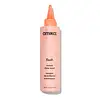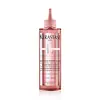What's inside
What's inside
 Key Ingredients
Key Ingredients

 Benefits
Benefits

 Concerns
Concerns

 Ingredients Side-by-side
Ingredients Side-by-side

Water
Skin ConditioningGlycerin
HumectantHydrolyzed Linseed Seed
HumectantVitis Vinifera Leaf Extract
Skin ConditioningWine Extract
AntioxidantGlycine Soja Germ Extract
EmollientScutellaria Baicalensis Root Extract
AstringentHippophae Rhamnoides Fruit/Seed Oil
AntimicrobialTriticum Vulgare Germ Extract
Skin ConditioningGlycine
BufferingAlanine
MaskingArginine
MaskingAspartic Acid
MaskingHistidine
HumectantIsoleucine
Skin ConditioningPhenylalanine
MaskingProline
Skin ConditioningSerine
MaskingThreonine
Valine
MaskingLactic Acid
BufferingCetrimonium Chloride
AntimicrobialSodium PCA
HumectantSodium Lactate
BufferingPCA
HumectantCitric Acid
BufferingBenzophenone-4
UV AbsorberLactobacillus Ferment
Skin ConditioningCalcium Gluconate
HumectantPropylene Glycol
HumectantPolyquaternium-7
Polyquaternium-10
Cellulose
AbsorbentPolysorbate 20
EmulsifyingPropanediol
SolventSilicone Quaternium-8
Trideceth-10
CleansingHydroxyethylcellulose
Emulsion StabilisingEthylhexylglycerin
Skin ConditioningGluconolactone
Skin ConditioningSodium Acetate
BufferingPotassium Sorbate
PreservativeSodium Benzoate
MaskingBenzyl Alcohol
PerfumingPhenoxyethanol
PreservativeIsopropyl Alcohol
SolventParfum
MaskingHydroxycitronellal
PerfumingLimonene
PerfumingWater, Glycerin, Hydrolyzed Linseed Seed, Vitis Vinifera Leaf Extract, Wine Extract, Glycine Soja Germ Extract, Scutellaria Baicalensis Root Extract, Hippophae Rhamnoides Fruit/Seed Oil, Triticum Vulgare Germ Extract, Glycine, Alanine, Arginine, Aspartic Acid, Histidine, Isoleucine, Phenylalanine, Proline, Serine, Threonine, Valine, Lactic Acid, Cetrimonium Chloride, Sodium PCA, Sodium Lactate, PCA, Citric Acid, Benzophenone-4, Lactobacillus Ferment, Calcium Gluconate, Propylene Glycol, Polyquaternium-7, Polyquaternium-10, Cellulose, Polysorbate 20, Propanediol, Silicone Quaternium-8, Trideceth-10, Hydroxyethylcellulose, Ethylhexylglycerin, Gluconolactone, Sodium Acetate, Potassium Sorbate, Sodium Benzoate, Benzyl Alcohol, Phenoxyethanol, Isopropyl Alcohol, Parfum, Hydroxycitronellal, Limonene
Alcohol Denat.
AntimicrobialPropylene Glycol
HumectantWater
Skin ConditioningCaprylic/Capric Triglyceride
MaskingMyristyl Alcohol
EmollientCetearyl Alcohol
EmollientCetrimonium Chloride
AntimicrobialBehentrimonium Methosulfate
Parfum
MaskingLactic Acid
BufferingPEG-14 Dimethicone
Skin ConditioningPPG-10 Methyl Glucose Ether
Skin ConditioningDi-C12-13 Alkyl Malate
EmollientTocopherol
AntioxidantTartaric Acid
BufferingLinalool
PerfumingLimonene
PerfumingGeraniol
PerfumingCentella Asiatica Extract
CleansingPentaerythrityl Tetra-Di-T-Butyl Hydroxyhydrocinnamate
AntioxidantCeramide AP
Skin ConditioningAlcohol Denat., Propylene Glycol, Water, Caprylic/Capric Triglyceride, Myristyl Alcohol, Cetearyl Alcohol, Cetrimonium Chloride, Behentrimonium Methosulfate, Parfum, Lactic Acid, PEG-14 Dimethicone, PPG-10 Methyl Glucose Ether, Di-C12-13 Alkyl Malate, Tocopherol, Tartaric Acid, Linalool, Limonene, Geraniol, Centella Asiatica Extract, Pentaerythrityl Tetra-Di-T-Butyl Hydroxyhydrocinnamate, Ceramide AP
 Reviews
Reviews

Ingredients Explained
These ingredients are found in both products.
Ingredients higher up in an ingredient list are typically present in a larger amount.
This ingredient is a preservative, antimicrobial, and emulsifier. It is often used in cosmetics for its ability to cleanse, condition, and reduce static.
Cetrimonium chloride is a quaternary ammonium salt, meaning it has a water-soluble structure.
Lactic Acid is another well-loved alpha hydroxy acid (AHA). It is gentler than glycolic acid but still highly effective.
Its main role is to exfoliate the surface of the skin by loosening the “glue” that holds dead skin cells together. Shedding those old cells leads to smoother, softer, and more even-toned skin.
Because lactic acid molecules are larger than glycolic acid, they don’t penetrate as deeply. This means they’re less likely to sting or irritate, making it a great choice for beginners or those with sensitive skin.
Like glycolic acid, it can:
Lactic acid also acts as a humectant (like hyaluronic acid). It can draw water into the skin to improve hydration and also plays a role in the skin's natural moisturizing factor (NMF) in the form of sodium lactate.
Studies show it can boost ceramide production to strengthen the skin barrier and even help balance the skin’s microbiome.
To get results, choose products with a pH between 3-4.
Lower strengths (5-12%) focus on surface exfoliation; higher strengths (12% and up) can reach deeper in the dermis (deeper, supportive layer) to improve skin texture and firmness over time.
Though it was originally derived from milk, most modern lactic acid used in skincare is vegan. It is made through non-dairy fermentation to create a bio-identical and stable form suitable for all formulations.
When lactic acid shows up near the end of an ingredient list, it usually means the brand added just a tiny amount to adjust the product’s pH.
Legend has it that Cleopatra used to bathe in sour milk to help reduce wrinkles.
Lactic acid is truly a gentle multitasker: it exfoliates, hydrates, strengthens, and brightens. It's a great ingredient for giving your skin a smooth, glowing, and healthy look without the harshness of stronger acids.
Read more about some other popular AHA's here:
Learn more about Lactic AcidLimonene is a fragrance that adds scent and taste to a formulation.
It's found in the peel oil of citrus fruits and other plants such as lavender and eucalyptus. The scent of limonene is generally described as "sweet citrus".
Limonene acts as an antioxidant, meaning it helps neutralize free radicals.
When exposed to air, oxidized limonene may sensitize the skin. Because of this, limonene is often avoided by people with sensitive skin.
The term 'fragrance' is not regulated in many countries. In many cases, it is up to the brand to define this term. For instance, many brands choose to label themselves as "fragrance-free" because they are not using synthetic fragrances. However, their products may still contain ingredients such as essential oils that are considered a fragrance.
Learn more about LimoneneParfum is a catch-all term for an ingredient or more that is used to give a scent to products.
Also called "fragrance", this ingredient can be a blend of hundreds of chemicals or plant oils. This means every product with "fragrance" or "parfum" in the ingredients list is a different mixture.
For instance, Habanolide is a proprietary trade name for a specific aroma chemical. When used as a fragrance ingredient in cosmetics, most aroma chemicals fall under the broad labeling category of “FRAGRANCE” or “PARFUM” according to EU and US regulations.
The term 'parfum' or 'fragrance' is not regulated in many countries. In many cases, it is up to the brand to define this term.
For instance, many brands choose to label themselves as "fragrance-free" because they are not using synthetic fragrances. However, their products may still contain ingredients such as essential oils that are considered a fragrance by INCI standards.
One example is Calendula flower extract. Calendula is an essential oil that still imparts a scent or 'fragrance'.
Depending on the blend, the ingredients in the mixture can cause allergies and sensitivities on the skin. Some ingredients that are known EU allergens include linalool and citronellol.
Parfum can also be used to mask or cover an unpleasant scent.
The bottom line is: not all fragrances/parfum/ingredients are created equally. If you are worried about fragrances, we recommend taking a closer look at an ingredient. And of course, we always recommend speaking with a professional.
Learn more about ParfumPropylene Glycol is an odorless, colorless liquid. As a humectant, it helps skin retain moisture. It also aids in delivering active ingredients.
Another role of this ingredient is preventing a product from melting or freezing. Propylene glycol also adds antimicrobrial properties to a product, elongating product lifespan.
This ingredient is considered an organic alcohol and commonly added into both cosmetics and foods.
Those with sensitive skin or conditions may develop a rash when using this ingredient.
Learn more about Propylene GlycolWater. It's the most common cosmetic ingredient of all. You'll usually see it at the top of ingredient lists, meaning that it makes up the largest part of the product.
So why is it so popular? Water most often acts as a solvent - this means that it helps dissolve other ingredients into the formulation.
You'll also recognize water as that liquid we all need to stay alive. If you see this, drink a glass of water. Stay hydrated!
Learn more about Water